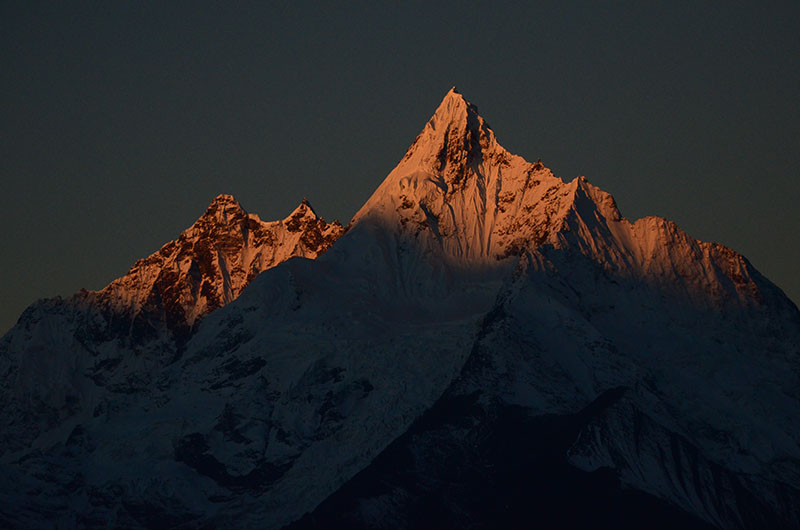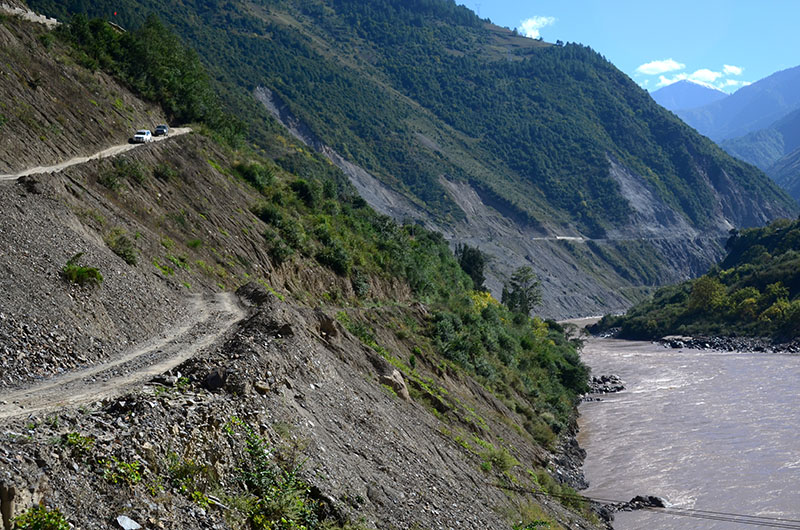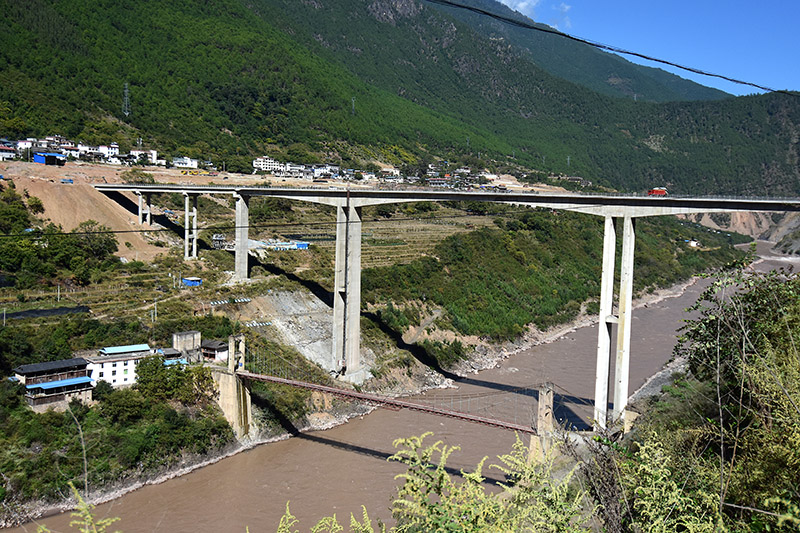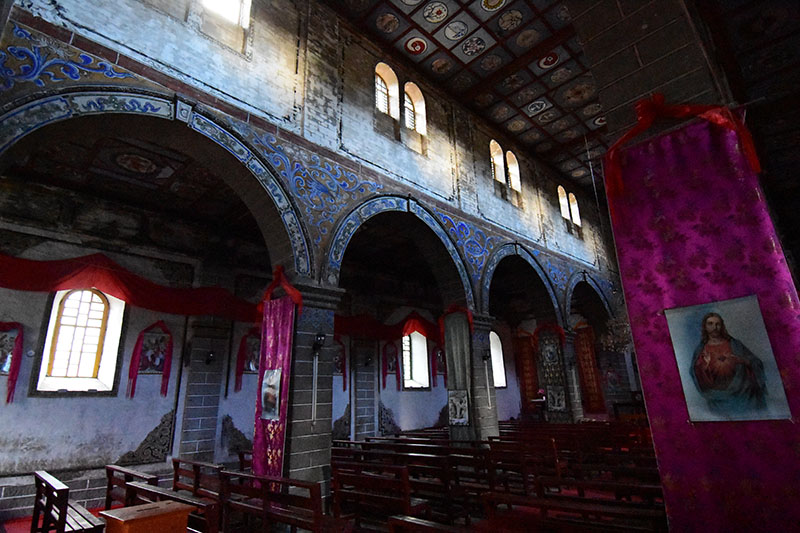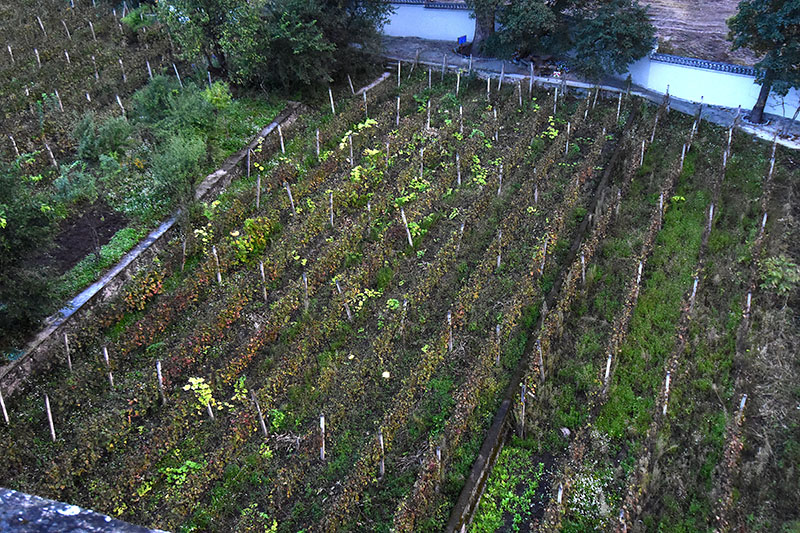Our founder, Peter Schindler, remembers the twists and turns of an autumn journey in northwest Yunnan…
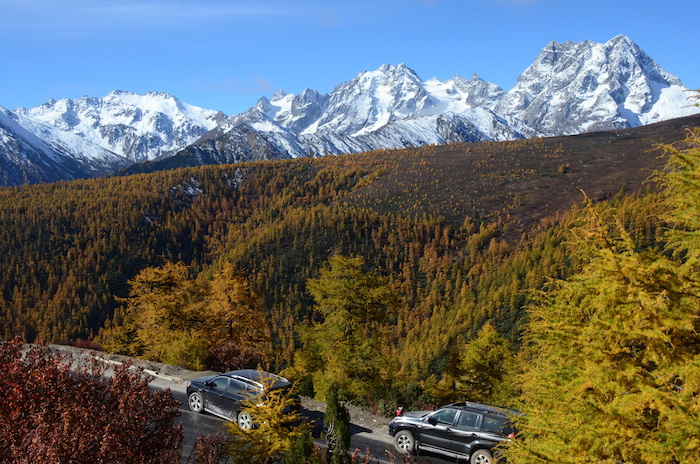
We pride ourselves on taking the time and trouble to seek out hidden gems in each of our destinations.
But what does it take to make a “hidden gem”? I’ve yet to come up with an adequate description, so my stock reply is that I know one when I see one.
As I drive from Lijiang to Shangri-La another thought is prompted when I think of hidden gems: they are harder and harder to find in relentlessly developing China (even in its second poorest province, Yunnan.) A new highway here; a high-speed railway there – one is currently under construction, carved into the Yulong and Haba mountain ranges between these two tourist spots.
As I head northwest beyond Shangri-La, I am comforted that the pace of development is less frenetic and I have a chance of seeing sunrise over Mt. Meili again (shown below on a fine morning in 2013). Even though this beautiful peak is well-known, it is often quite literally hidden by the mists that unfurl across the Hengduan Mountains, here at the eastern edge of the Himalayas. But the outlook isn’t promising, with rain forecast for the following day.
Despite this, I drag myself out of bed before dawn, dress warmly and head into the hotel’s freezing foyer. I stop to listen for the pitter-patter of rain. Nothing. Half asleep, I open the front door and am greeted by brilliant and rosy rays of dawn light. Instantly, I’m awake and run as fast as my legs will carry me uphill to the where I know I will be able to see Mt. Meili. I arrive a few minutes later, breathless. The mountain reveals herself differently each time the clouds clear, but the view is always glorious. Still a gem!
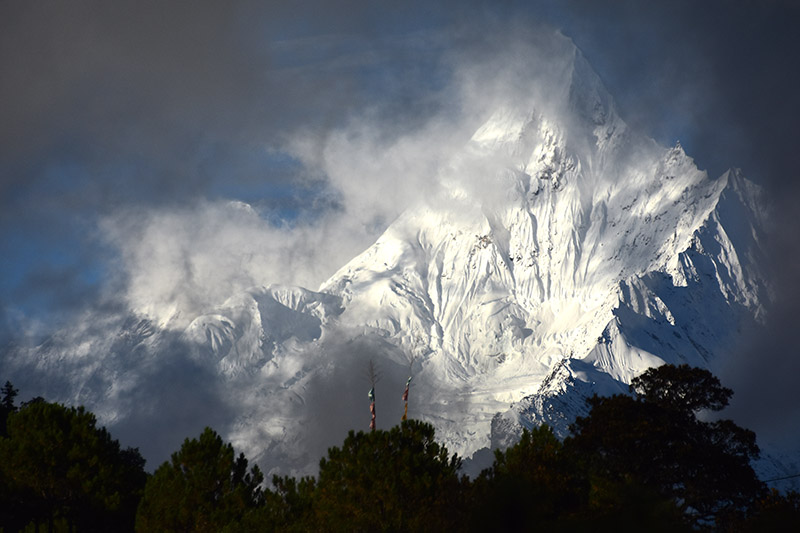
After breakfast, I look forward to taking a closer look at another place that has “hidden gem” potential: the small town of Cizhong in the Mekong river valley, ninety minutes south of Mt. Meili. In 2013, when I was there for the first time, I had to negotiate two tight switchback turns and then crossing the Mekong on a rickety bridge. The approach made me feel adventurous, just the way I like it. After driving up on the opposite side I arrived in the tiny village. The heart of the village was occupied, somewhat unexpectedly, by a Catholic church. At that time, we had very little time. I tried to enter the church, but it was firmly locked, and I left with nothing but a couple of photos.
Today I hope to have better luck. As I approach Cizhong, I can’t believe my eyes. While the rickety bridge is still there, it is now towered over by a modern one that takes the adventure out of the Mekong crossing. Furthermore, large swathes of the once-sleepy village have been turned into a construction site. Today I am with guests and my heart sinks: “How can it be? Don’t let it be…”
On the northern edge of Cizhong still stands a lovely hotel with just ten rooms, thankfully hidden away from the mess of construction. “The village government is relocating here. Along with new housing come a school and a hospital,” explains the hotel manager. How can one object?
Thankfully my guests are travellers, rather than tourists. They take all this in their stride, with the attitude that travel is about learning. At 5pm we head out to explore the village and see the church. This time the door is open.
We enter the inner courtyard of the church compound. We look around. There is no one, but we hear footsteps above. I venture up a wooden staircase to the first floor and follow an interior balcony. A casually dressed middle-aged gentleman exits from a door and walks toward me. “I’m sorry to disturb you. We’re looking for the priest.” “That’s me.” “We would like to look at the church. When will it open?” “I’m busy preparing for mass. Here’s the key. Feel free to take a look. I’ll be down there in a minute.”
“Here’s the key to the church,” I tell my guests. They smile. The high wooden doors to the church open with several tired creaks. After taking a look at the nave, we venture up the church steeple, from where we have a lovely view over the vineyards that the Western missionaries planted a century ago. (“One can’t work in such a remote area without something to drink” is what I’m sure they said to themselves.)
When dusk turns to dark, we climb back down and see the priest welcoming a small congregation for evening mass. “Over 60% of the villagers are Catholic,” he says, with obvious pride. His parishioners include Bai, Yi, Lisu, Naxi and Tibetans among their number. The missionaries that built this church were French. Today’s priest is, as it turns out, from Inner Mongolia and was trained by Han Chinese in Beijing.
Then he begins to hold mass. His flock kneel and stand and chant hymns. We partake as bystanders. Never in my life have I been so moved by such a confluence of cultures in such unexpected circumstances…
In a remote corner of Yunnan where the heaven is high and the emperor is far away, there survives a hidden gem if ever I’ve seen one.
You can read more about the history of this church here:
